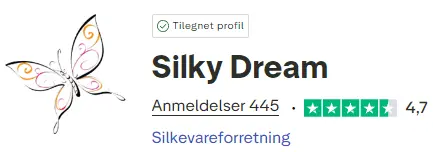History of Silk
The secret history of silk – from imperial missions to modern elegance
Silk has been a symbol of luxury, elegance and craftsmanship for thousands of years. Known as the “queen of textiles,” it has adorned emperors, nobility and celebrities – and continues to captivate people worldwide. But silk’s journey from a closely guarded secret in China to a global icon is both dramatic and fascinating.
Origin of silk – a protected secret
Silk was originally produced only in China. The cultivation of the and its production methods were state secrets, and revealing them could lead to execution. Silk was so valuable that it was literally in the Roman Empire.
Around the year 550, Byzantine Emperor Justinian sent two monks on a secret mission to China. They returned with , breaking the Chinese monopoly.
How silk is made – nature’s masterpiece
Silkworms feed exclusively on and grow up to 70 times their size in just a few weeks. Once mature, they spin a . The thread consists of <strongfibroin, coated with <strongsericin – a natural glue.
From cocoon to fabric – silk processing
The thread is extracted through a process called <strongreeling, where cocoons are soaked and unwound onto spools. (Peace Silk) allows the worm to exit before processing – a more ethical but less efficient method.
Silk quality – texture, dyeing and shine
- Results in softer and more dyeable silk
- Smooth habotai vs. crinkled crepe
- <strongDyeing: Silk absorbs color deeply and remains vibrant
Benefits of silk
- Silk is in the same thread thickness
- Its prism-like structure gives a
- are gentle on the skin and moisture-wicking
- Silk protects against and resists static electricity
- It is <strongflame-resistant and emits no toxic gases
Care and storage
- <strongWashing: Use enzyme-free detergent at 30 °C, do not wring
- <strongIroning: Use a cloth barrier, low heat, minimal steam
- Dab gently from the reverse side with a damp cloth
- <strongStorage: Protect from moisture, light and moths
Learn more about Ahimsa silk and the history of the kimono.
-
45% OffNew
Customer Reviews
“I’ve never slept better – the silk feels like a dream against the skin.”
– Lise
“Fantastic quality and lightning-fast delivery. I’ll never buy other nightwear again.”
– Jonas
“My skin no longer itches – the silk underwear is truly allergy-friendly.”
– Camilla








